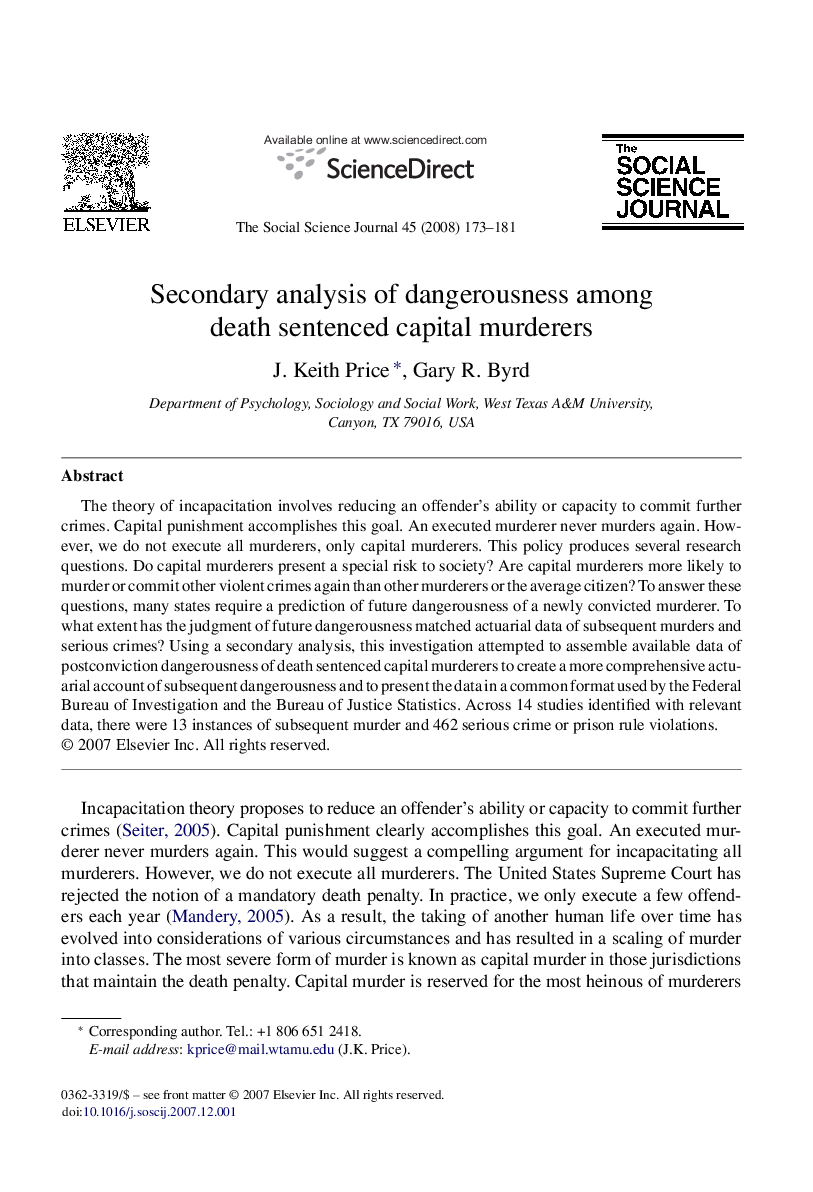| Article ID | Journal | Published Year | Pages | File Type |
|---|---|---|---|---|
| 140601 | The Social Science Journal | 2008 | 9 Pages |
Abstract
The theory of incapacitation involves reducing an offender's ability or capacity to commit further crimes. Capital punishment accomplishes this goal. An executed murderer never murders again. However, we do not execute all murderers, only capital murderers. This policy produces several research questions. Do capital murderers present a special risk to society? Are capital murderers more likely to murder or commit other violent crimes again than other murderers or the average citizen? To answer these questions, many states require a prediction of future dangerousness of a newly convicted murderer. To what extent has the judgment of future dangerousness matched actuarial data of subsequent murders and serious crimes? Using a secondary analysis, this investigation attempted to assemble available data of postconviction dangerousness of death sentenced capital murderers to create a more comprehensive actuarial account of subsequent dangerousness and to present the data in a common format used by the Federal Bureau of Investigation and the Bureau of Justice Statistics. Across 14 studies identified with relevant data, there were 13 instances of subsequent murder and 462 serious crime or prison rule violations.
Related Topics
Social Sciences and Humanities
Psychology
Social Psychology
Authors
J. Keith Price, Gary R. Byrd,
